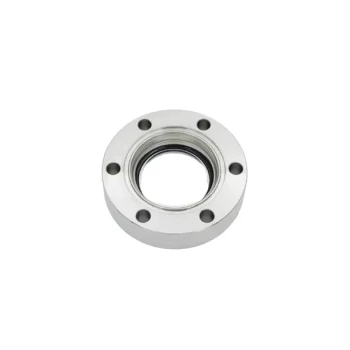Vacuum furnaces are critical in modern industrial production for their ability to process materials in oxygen-free environments, ensuring high purity, precision, and enhanced material properties. They are widely used in aerospace, metallurgy, electronics, and advanced manufacturing, offering advantages like reduced contamination, improved mechanical properties, and energy efficiency. Their versatility extends to specialized applications such as sintering, brazing, and heat treatment, making them indispensable for high-performance material development.
Key Points Explained:
-
Oxygen-Free Processing Environment
- Vacuum furnaces operate under sub-atmospheric pressure, eliminating oxidation and contamination during high-temperature processes.
- Ideal for sensitive materials like titanium, superalloys, and ceramics, where even trace oxygen can degrade quality.
- Applications include annealing, sintering, and brazing in industries like aerospace and semiconductor manufacturing.
-
Enhanced Material Properties
- Vacuum heat treatment improves mechanical characteristics (e.g., hardness, ductility) by enabling uniform heating and controlled cooling.
- Used in metal processing (e.g., tool steels) and ceramic manufacturing to achieve superior strength and durability.
- The vacuum hot press machine combines pressure and vacuum for denser, defect-free composites.
-
Energy Efficiency and Precision
- Modern vacuum furnaces integrate digital controls for precise temperature regulation (±1°C) and energy-saving hold modes.
- Reduced heat loss compared to conventional furnaces lowers operational costs.
-
Diverse Industrial Applications
- Aerospace: Producing turbine blades and lightweight alloys.
- Electronics: Manufacturing high-purity silicon wafers and superconducting materials.
- Medical Devices: Creating biocompatible implants with minimal impurities.
-
Research and Innovation
- Enables material science studies (e.g., phase transitions) under repeatable conditions.
- Supports additive manufacturing (e.g., sintering 3D-printed metals) and nanotechnology.
-
Specialized Configurations
- Tube furnaces with vacuum systems allow gas-controlled reactions for battery materials.
- Vacuum induction melting furnaces refine high-purity metals for jewelry and aerospace.
Have you considered how vacuum technology quietly enables breakthroughs in renewable energy components, like fuel cells? These furnaces are not just tools but catalysts for advancing sustainable industrial practices.
Summary Table:
| Key Feature | Industrial Benefit | Example Applications |
|---|---|---|
| Oxygen-Free Processing | Eliminates oxidation, ideal for sensitive materials like titanium and ceramics. | Aerospace turbine blades, semiconductor wafers, medical implants. |
| Enhanced Material Properties | Improves hardness, ductility, and durability through controlled heat treatment. | Tool steel hardening, ceramic sintering, composite densification. |
| Energy Efficiency | Digital controls reduce heat loss, lowering operational costs. | Batch processing of alloys, precision brazing, additive manufacturing. |
| Versatility | Supports diverse processes (sintering, brazing, melting) across industries. | Fuel cell component production, 3D-printed metal sintering, nanotechnology research. |
Elevate your production with KINTEK’s advanced vacuum furnace solutions!
Leveraging our in-house R&D and manufacturing expertise, we deliver customized high-temperature furnaces tailored to your unique needs—whether for aerospace, electronics, or cutting-edge material science. Our product range includes precision vacuum heat treatment systems, tube furnaces, and specialized configurations like vacuum hot press machines for defect-free composites.
Contact us today to discuss how our solutions can optimize your industrial processes!
Products You Might Be Looking For:
High-purity vacuum observation windows for process monitoring
Precision vacuum feedthroughs for electrical applications
Durable stainless steel vacuum valves for system control
Energy-efficient vacuum heat treat furnaces
High-temperature MoSi2 heating elements



















